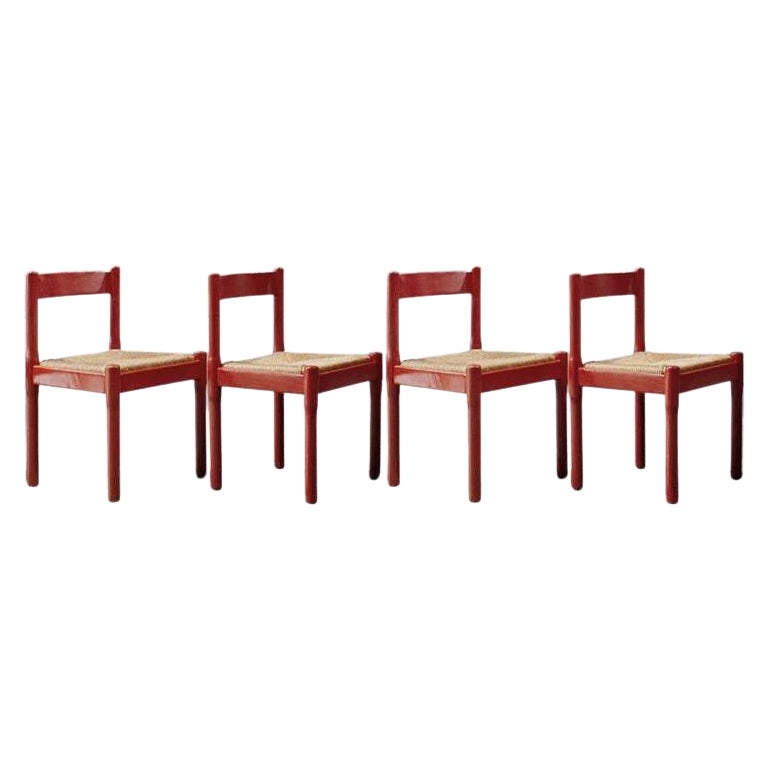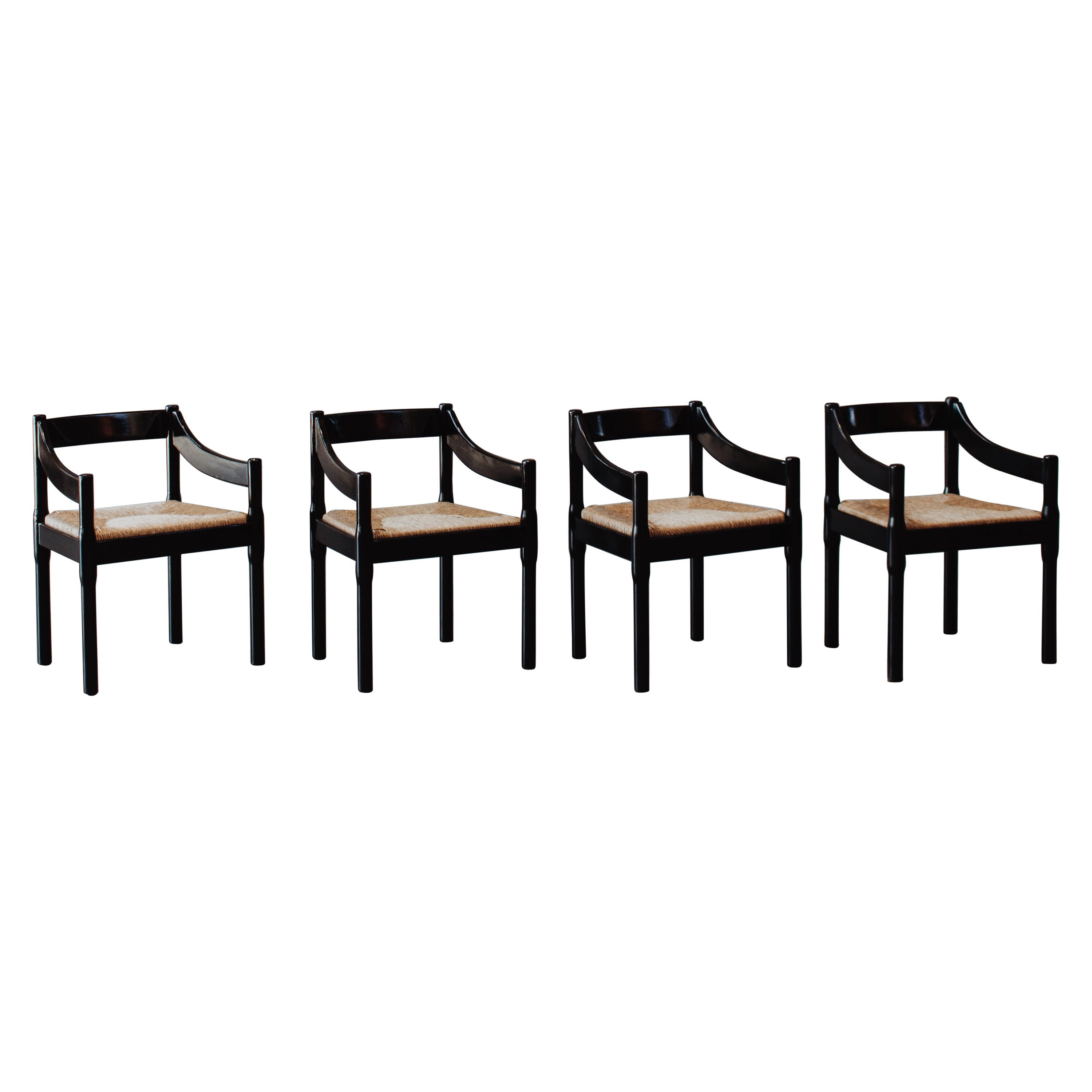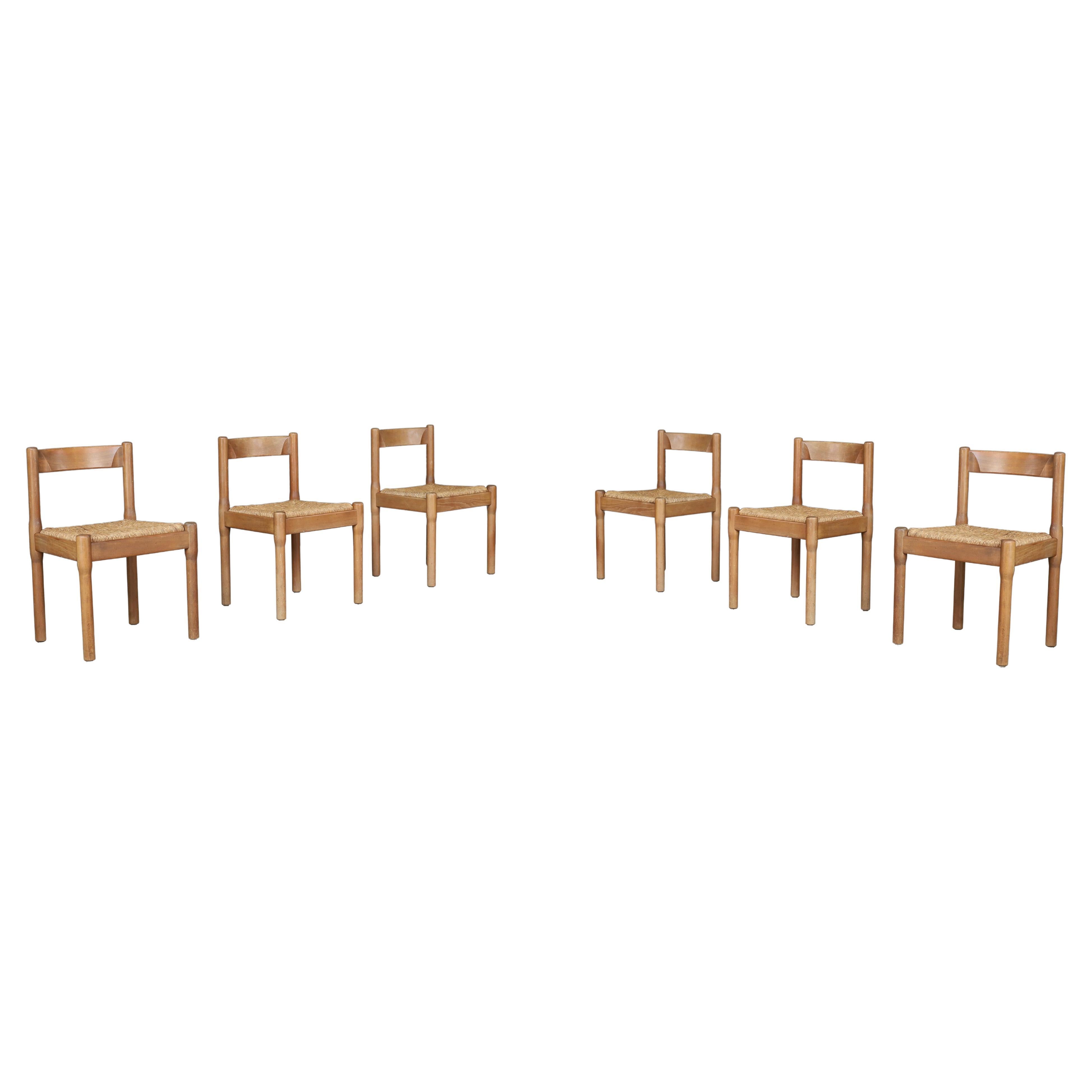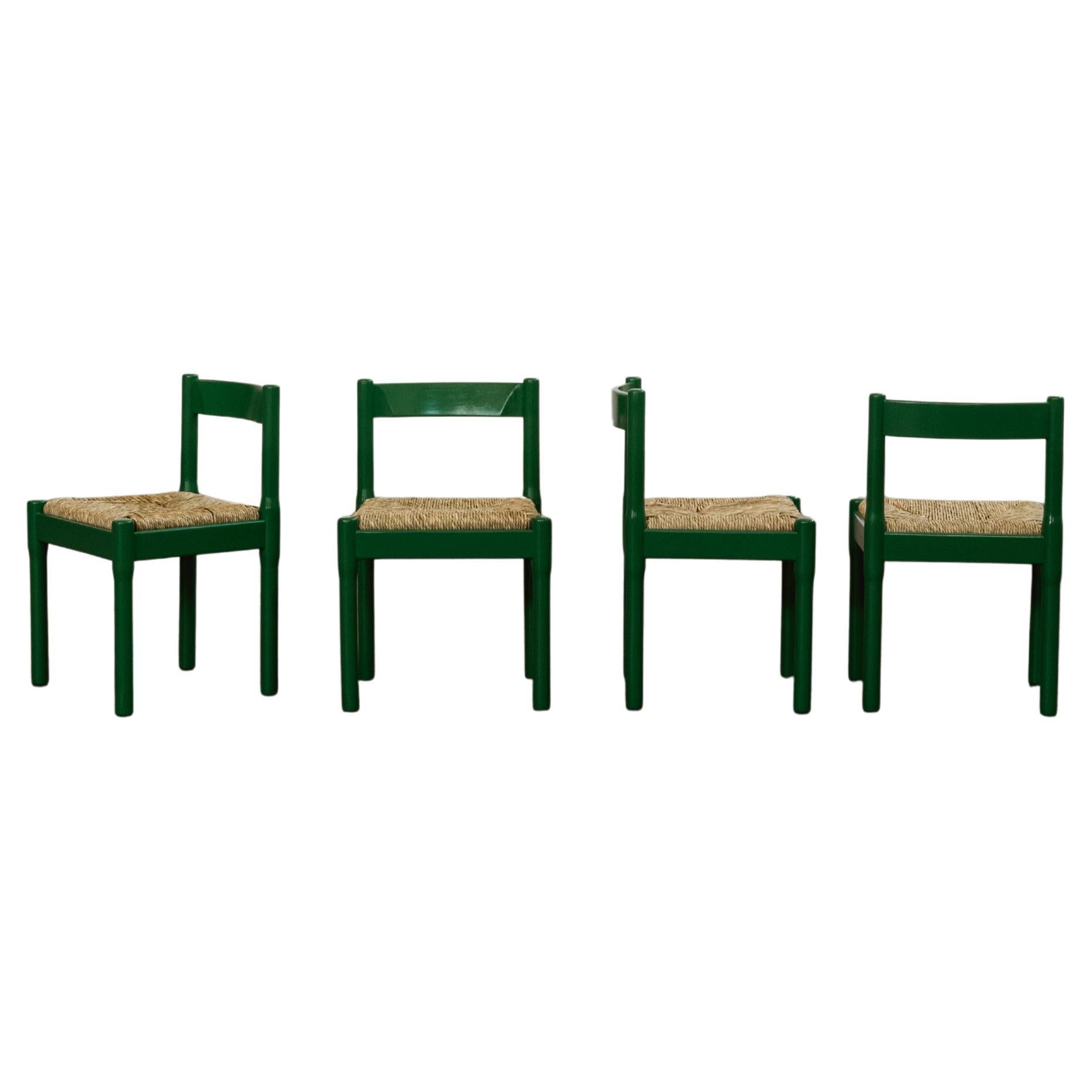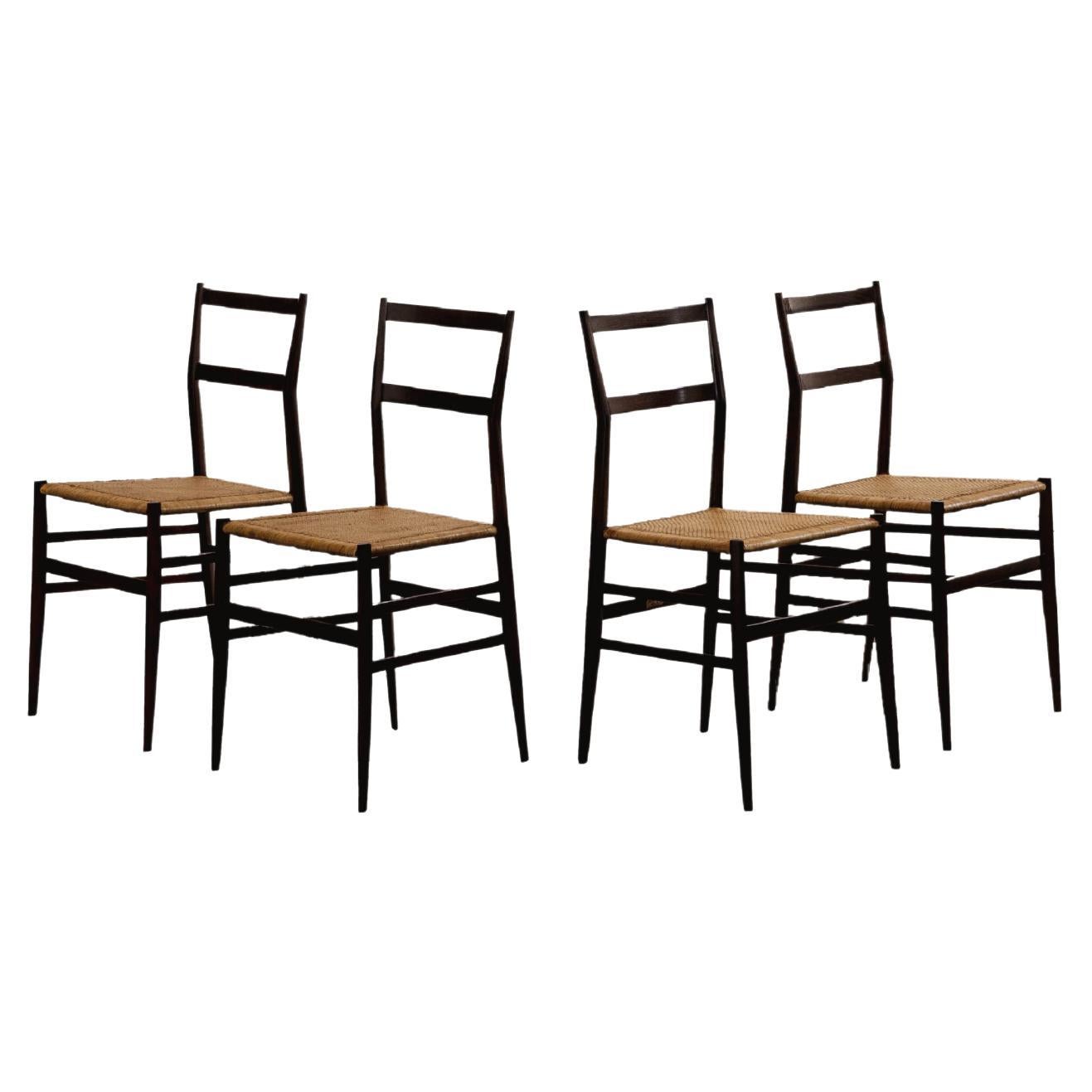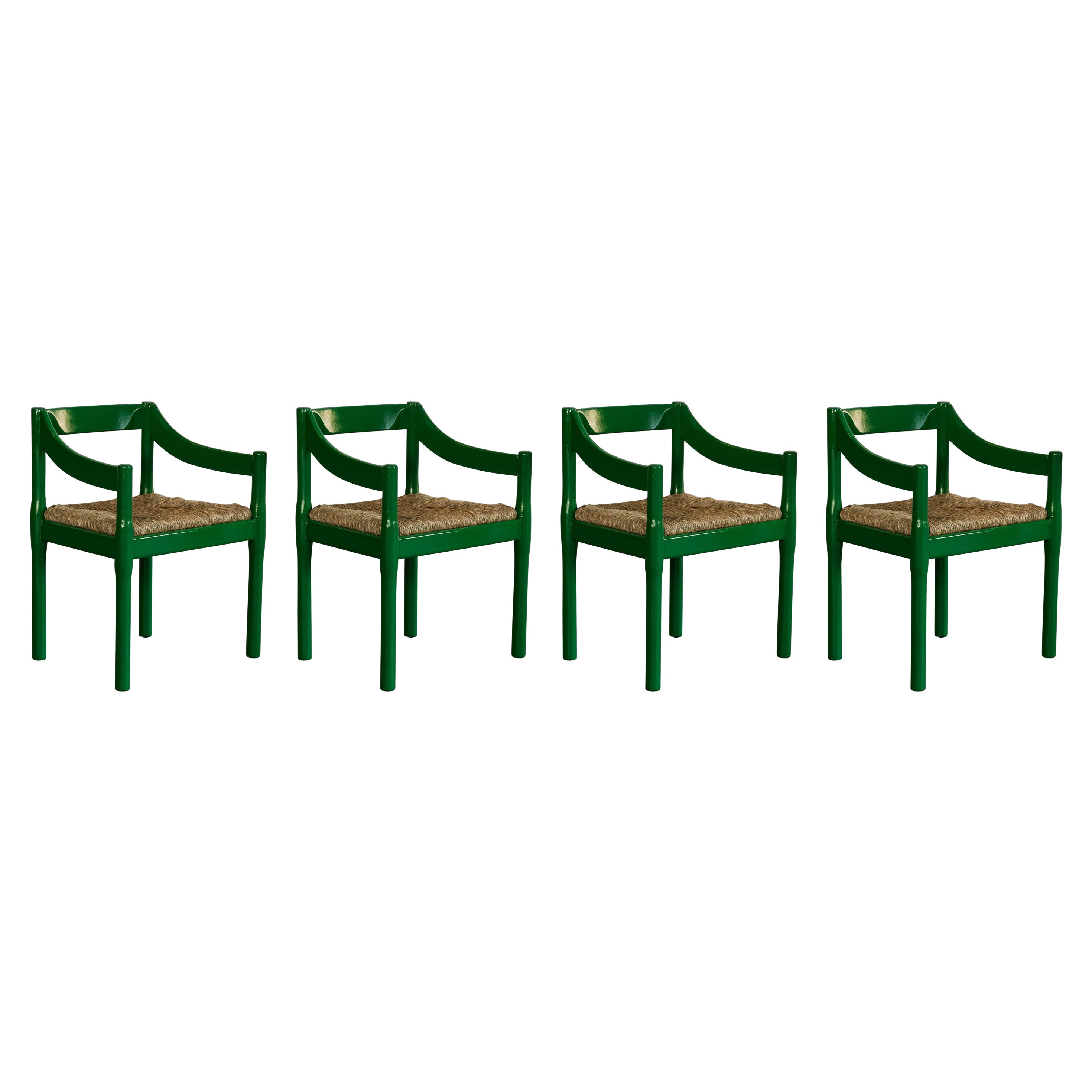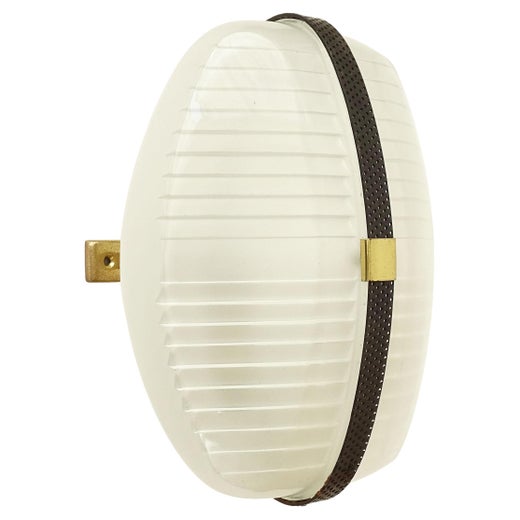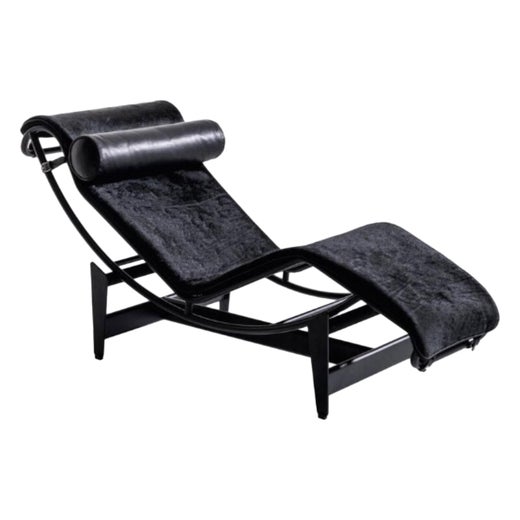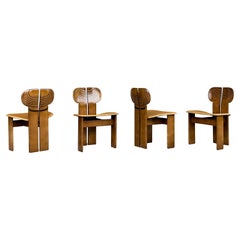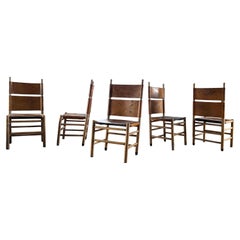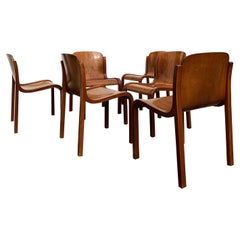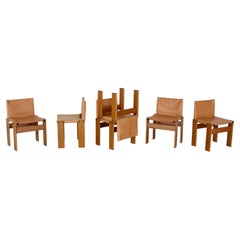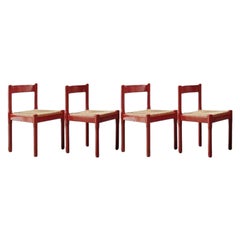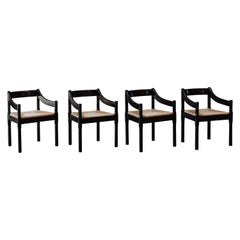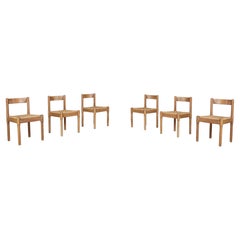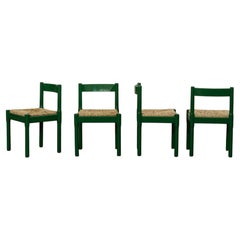Vico Magistretti Midcentury “Carimate” Dining Chair for Cassina, 1963, Set of 4
About the Item
- Creator:Cassina (Manufacturer),Vico Magistretti (Designer)
- Dimensions:Height: 29.93 in (76 cm)Width: 20.08 in (51 cm)Depth: 19.3 in (49 cm)Seat Height: 17.72 in (45 cm)
- Sold As:Set of 4
- Style:Mid-Century Modern (Of the Period)
- Materials and Techniques:
- Place of Origin:
- Period:
- Date of Manufacture:1963
- Condition:Reupholstered. The chairs have been restored in Italy by the best artisans. They have been re-upholstered with an Italian soft green velvet.
- Seller Location:Vicenza, IT
- Reference Number:1stDibs: LU8019241157712
Vico Magistretti
As one of the founding fathers of modern Italian design, prolific architect and industrial designer Ludovico Magistretti (known by his nickname Vico) was guided by his philosophy, “There is no excuse for bad design.” His architectural projects are widely revered, and an ingenious meld of form and function can be found in his stylish and deceptively simple table lamps, sofas, armchairs and other mid-century furnishings.
Born in Milan, Magistretti followed in the footsteps of his father and grandfather (both architects) to study architecture at the Polytechnic University of Milan. At the outbreak of World War II, he fled to Switzerland, and it was there he met his role model and mentor, renowned humanist architect Ernesto Nathan Rogers. Magistretti was inspired by Rogers’s vision to revive postwar Italy, and they collaborated on several reconstruction projects. Among Magistretti’s first architectural designs is a “poetic” round church, which he created for the QT8, an experimental Milanese neighborhood.
When Magistretti returned to Milan in 1945, he worked at his father’s architectural firm. It wasn’t until the early 1950s that he expanded his talents into design while working with furniture artisans.
In the 1960s, Magistretti began his 30-year working relationship with famed entrepreneur Cesare Cassina of the Cassina furniture manufacturing company. In their design approach, the two men shared a vision of the relationship between modernity and tradition and enjoyed a close bond (Magistretti designed Cassina’s luxurious villa in 1965). However, their friendship was not without contention.
Legend has it that upon seeing the prototype for Magistretti’s Maralunga sofa, Cassina hated it so much that he punched it, breaking the back of the sofa, which crumpled into itself.
“Right, great, it looks perfect to me like that,” an unfazed Magistretti allegedly responded, and the Maralunga’s slumped, adjustable-height backrest was born. Incidentally, the Maralunga sofa won Italy’s Compasso d’Oro award as did his Eclisse lamp for Artemide and his Atollo lamp for Oluce.
Magistretti died in 2006, but his designs live on in galleries, museums and private residences and offices around the world.
Find a range of vintage Vico Magistretti furniture and lighting on 1stDibs.
Cassina
Furniture manufacturer Cassina is a prolific design house for more reasons than one: It not only owns the licenses to an exquisite collection of iconic chairs, sofas, tables and other pieces from the 20th and 21st centuries but also produces original works that are characterized by innovation and the finest Italian craftsmanship.
Cassina’s illustrious legacy includes being one of the first companies to bring industrial design to Italy in the 1950s. Founded in 1927 in Meda, Italy, by brothers Cesare and Umberto Cassina, the Italian manufacturing giant originally specialized in bespoke woodworking. In nearly a century since its founding, the company has shown incredible foresight about design trends and the evolution of technology.
In 1964, Cassina signed an exclusive licensing agreement to manufacture furniture by Le Corbusier and his collaborators — such as the LC4 chaise longue made with trailblazing French modernist Charlotte Perriand and Pierre Jeanneret — a move that would shape the future of the company. Cassina’s I Maestri collection is an ongoing initiative to restyle landmark designs from the 20th century, such as pieces by Gerrit Rietveld (the Red and Blue armchair from 1918), Charles Rennie Mackintosh, Erik Gunnar Asplund, Franco Albini and Frank Lloyd Wright. The company preserves the intentions and original styles of their designs but adds updated techniques, materials and processes — rendering them the best possible combination of past, present and future. The brand has also worked with contemporary icons like Zaha Hadid, Gio Ponti and Philippe Starck.
Cassina’s original designs are cutting-edge as well. They include pieces for everyday use, the development of which is guided by comfort and the marriage of Italian craftsmanship with industrial technology.
Some of Cassina’s pieces, both from its contemporary and I Maestri collections, can be found in the collections of museums like the Museum of Modern Art and the Vitra Design Museum. In 2014, the company became part of Haworth in its acquisition of Italian furniture group Poltrona Frau, and in 2015, Spanish designer Patricia Urquiola joined Cassina as its art director, leading the brand into its next century of inventive style.
Find a collection of new and vintage Cassina furniture on 1stDibs.
- ShippingRetrieving quote...Shipping from: Vicenza, Italy
- Return Policy
More From This Seller
View AllVintage 1970s Italian Mid-Century Modern Chairs
Brass
Vintage 1970s Italian Mid-Century Modern Dining Room Tables
Walnut, Leather, Plastic
Vintage 1960s Italian Mid-Century Modern Chairs
Straw, Beech
Vintage 1970s Italian Mid-Century Modern Chairs
Leather, Walnut
Vintage 1970s Italian Mid-Century Modern Chairs
Leather, Walnut
Vintage 1970s Italian Mid-Century Modern Chairs
Leather, Walnut
You May Also Like
Vintage 1960s Italian Mid-Century Modern Chairs
Straw, Wood
Vintage 1960s Italian Mid-Century Modern Chairs
Straw, Wood
Mid-20th Century Italian Mid-Century Modern Dining Room Chairs
Straw, Beech
Vintage 1960s Italian Mid-Century Modern Chairs
Straw, Wood
Vintage 1950s Italian Mid-Century Modern Chairs
Rope, Ash, Wood
Vintage 1960s Italian Mid-Century Modern Chairs
Straw, Wood
Read More
The 21 Most Popular Mid-Century Modern Chairs
You know the designs, now get the stories about how they came to be.
Billy Cotton Layers His Interiors with Lived-In Comfort
The Brooklyn-based designer is adept at styles ranging from austere to over-the-top, espousing an architectural, detail-oriented approach also evident in his line of furniture and lighting.
